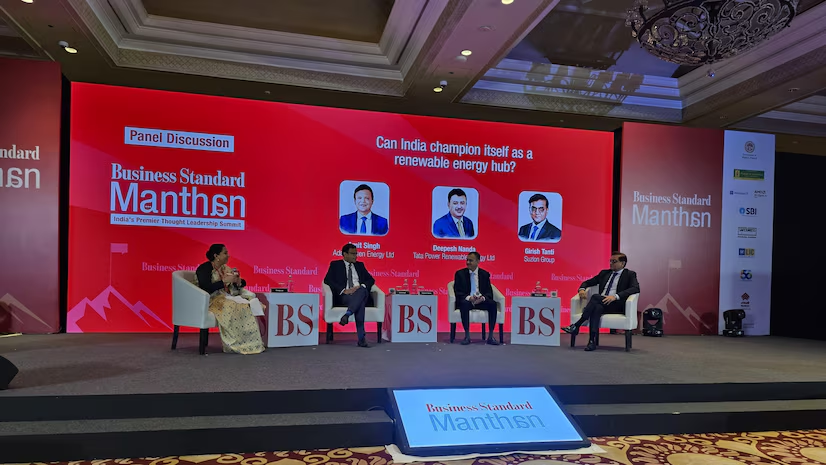India’s EV Revolution: Role of renewable energy in sustainable mobility
By Sat Singh, Executive Director, Impact Finance India stands at the intersection of two major transitions – Electrification of transport and Rapid renewable energy adoption. With ambitious targets of 30 percent electric vehicle (EV) penetration by 2030 and 500 GW of non-fossil fuel power capacity, the country has an opportunity to align these shifts. However, an overlooked challenge is that India’s EV ecosystem still relies heavily on coal-based electricity, limiting its sustainability potential. The real question is: can India de-carbonise mobility while ensuring a green energy transition? This article explores the current energy mix powering EVs, the potential of renewable-powered charging infrastructure, and innovative solutions like vehicle-to-grid (V2G) and green hydrogen. The dirty secret of India’s EVs: Coal powered mobility? EVs are often marketed as “zero-emission vehicles,” but their environmental benefits depend entirely on the source of electricity used for charging. Currently, over 70 per cent of India’s electricity is generated from coal. This means that while an EV produces no tailpipe emissions, it indirectly contributes to carbon emissions if charged from the conventional grid. Studies indicate that if an EV is powered by India’s existing electricity mix, its total lifetime emissions are only 30-50 per cent lower than a petrol or diesel vehicle. In contrast, when charged using 100 per cent renewable energy, lifetime emissions can be reduced by over 90 per cent. Thus, the EV revolution must go hand-in-hand with a clean energy transition to achieve true decarbonisation. Synergy between EVs and renewables: A missed opportunity? In many global markets, EV charging is increasingly linked to renewable energy sources. Norway powers 90 per cent of its EVs using hydroelectricity. California mandates solar-powered charging infrastructure in public spaces. Germany integrates EV charging with its wind energy surplus. India, however, is yet to fully leverage this synergy between EVs and renewables. The following strategies can unlock this potential: Solar-powered EV charging Solar-powered EV charging stations present a scalable, decentralised solution for powering clean mobility. India receives over 300 sunny days annually, making rooftop and off-grid solar charging stations an ideal alternative to coal-based grid power. If just 1 per cent of urban rooftops were converted into solar EV charging hubs, they could power over 10 million two-wheelers annually. The Delhi Metro has successfully implemented solar-based EV charging stations, a model that can be replicated nationwide. Time-of-day (ToD) pricing for EV charging, where users charge vehicles during peak solar generation hours, can help balance grid demand. Despite these benefits, solar-powered charging stations remain underdeveloped in India due to high upfront costs, lack of incentives, and policy gaps. Expanding subsidies for solar EV chargers and net metering incentives could boost adoption. V2G integration Few discussions on EVs in India focus on Vehicle-to-Grid (V2G) technology, which allows EVs to return surplus energy to the grid. This can be game-changing for India’s power sector, which faces frequent demand fluctuations and renewable energy intermittency. A fleet of 1 million V2G-enabled EVs could supply 5 GW of flexible power, equivalent to a medium-sized hydropower project. V2G can help stabilise India’s grid by absorbing excess solar and wind energy during periods of high generation. Case study: Japan successfully deployed V2G-enabled EVs during power outages, demonstrating its reliability in crisis situations. For V2G to succeed in India, policy support is essential-such as mandatory V2G compatibility in new EV models and incentives for EV owners who return energy to the grid. Green hydrogen for heavy transport While lithium-ion battery EVs dominate passenger cars and two-wheelers, green hydrogen is emerging as the best alternative for long-haul transport, buses, and heavy trucks. India’s first hydrogen-powered bus was launched in Leh in 2023, demonstrating the potential of fuel-cell EVs (FCEVs) in high-altitude regions. NTPC, Adani, and Reliance are investing in green hydrogen production, aiming to power 50,000 hydrogen-powered trucks by 2030. Cost challenge: Hydrogen fuel remains expensive (~Rs 400/kg), but government subsidies under the National Green Hydrogen Mission aim to reduce costs to Rs 100/kg by 2030. If India scales up domestic electrolyzer manufacturing and renewable-powered hydrogen production, green hydrogen can become a viable fuel for India’s logistics sector. The road ahead India has introduced multiple schemes to boost EV adoption. Faster Adoption and Manufacturing of Electric Vehicles (FAME II), which offers subsidies for EVs and charging infrastructure. The Production Linked Incentive (PLI) scheme for advanced battery manufacturing. However, no policy mandates renewable energy use for EV charging. India can accelerate its clean mobility transition by implementing key interventions such as mandating Renewable Purchase Obligations (RPOs) for EV charging networks to ensure a percentage of electricity comes from renewables and providing subsidies for solar-powered charging infrastructure to encourage adoption in businesses and residential complexes. ToD pricing can incentivise EV users to charge during peak solar and wind generation periods. Additionally, mandating V2G compatibility in new EV models will enable bidirectional energy flow, enhancing grid stability. Finally, a national roadmap for hydrogen-powered transport can provide clear policy direction to scale up green hydrogen adoption, particularly for heavy transport Conclusion India’s EV revolution must not be treated in isolation, it should be strategically linked with renewable energy expansion. Without a conscious effort to power EVs with clean energy, India risks merely shifting emissions from tailpipes to smokestacks. The solutions exist: solar charging stations, V2G integration, and green hydrogen, but policy action and investment acceleration are crucial. If India gets this right, it won’t just lead an EV revolution- it will pioneer a globally replicable model for sustainable mobility. By integrating EVs with renewables, India can achieve a cleaner, more resilient, and self-reliant energy future.


